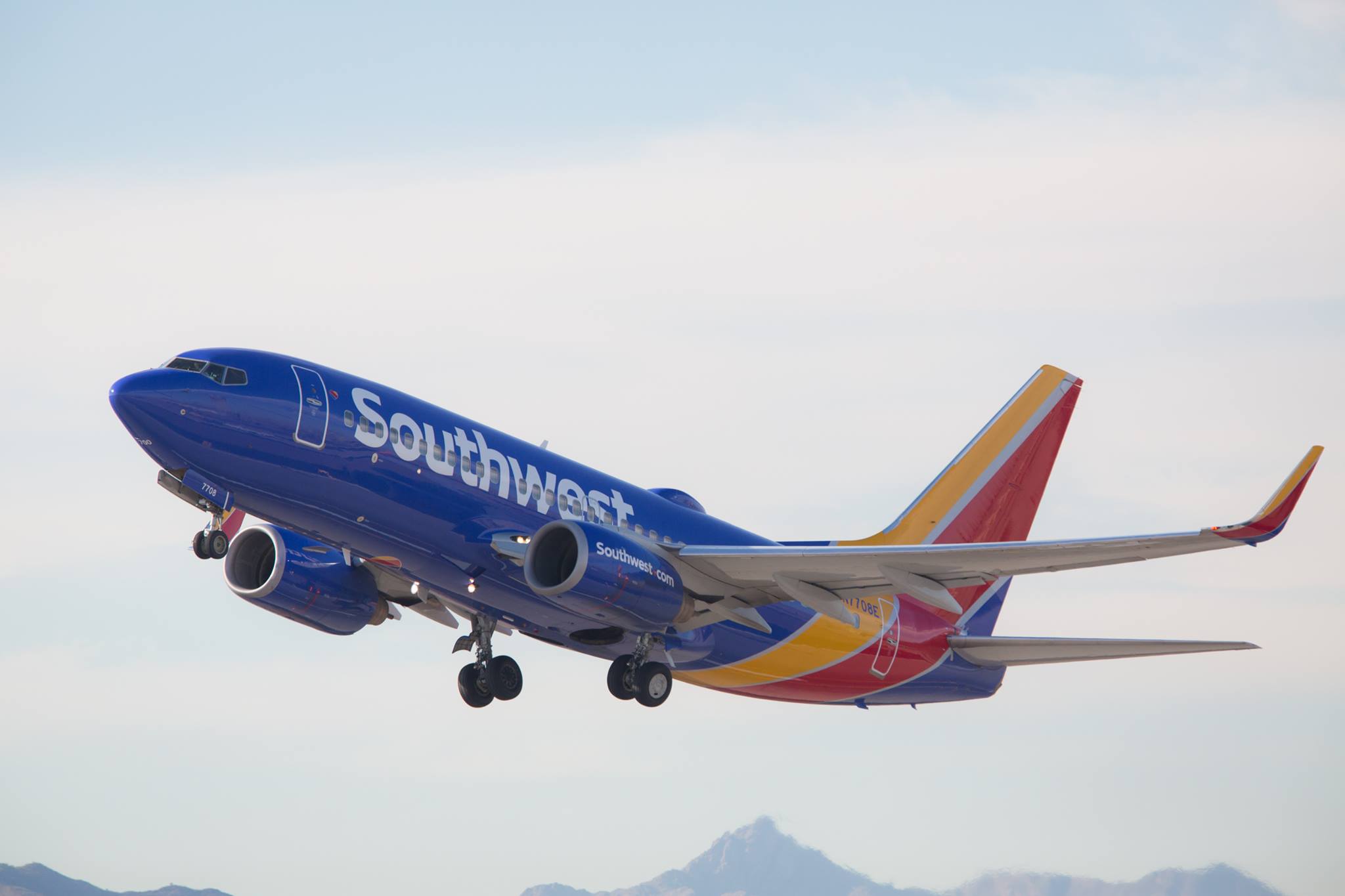The long-running grounding of the Boeing (BA 0.62%) 737 MAX has upended Southwest Airlines' (LUV +0.24%) plans for 2019. It should be no surprise that Southwest is feeling the biggest impact among U.S. carriers from the grounding. After all, it is an all-737 airline and Boeing's top customer for the 737 MAX.
Despite this obstacle, Southwest Airlines reported strong earnings results for the second quarter on Thursday morning. The carrier also had a relatively optimistic outlook for the rest of 2019, although the headwinds from the 737 MAX grounding will continue until the end of the year.
Southwest Airlines results: The raw numbers
|
Metric |
Q2 2019 |
Q2 2018 |
Change |
|---|---|---|---|
|
Revenue |
$5.91 billion |
$5.74 billion |
2.9% |
|
Total unit revenue |
14.78 cents |
13.84 cents |
6.8% |
|
Adjusted cost per available seat mile excluding fuel |
9.52 cents |
8.60 cents |
10.7% |
|
Adjusted net income |
$741 million |
$729 million |
1.6% |
|
Adjusted operating margin |
16.4% |
16.8% |
(0.4 pp) |
|
Adjusted EPS |
$1.37 |
$1.26 |
8.7% |
Data source: Southwest Airlines Q2 earnings release. Pp = percentage points.
What happened with Southwest Airlines this quarter?
The extended grounding of the Boeing 737 MAX was the main highlight of the second quarter for Southwest Airlines. The carrier had 34 737 MAX 8s in its fleet when the grounding order came through in mid-March, and it was supposed to take another 41 737 MAX deliveries by the end of the year.
With more than 4% of its fleet out of service -- and new aircraft deliveries delayed indefinitely -- Southwest's capacity fell 3.6% year over year last quarter, compared to its initial plan for mid-single-digit growth. As a result, the carrier's cost structure was too high for the level of capacity it ended up offering.
This caused adjusted nonfuel unit costs to surge more than 10%. Still, Southwest Airlines did beat its June guidance update, which had called for adjusted nonfuel unit costs to rise 11.5% to 12.5%. (Management attributed this to certain costs shifting into the second half of the year.) On the bright side, Southwest's average fuel cost dipped to $2.13 per gallon from $2.21 per gallon a year earlier. That -- combined with a strong 6.8% increase in revenue per available seat mile (RASM) -- enabled Southwest to post a record profit for the quarter.
Looking beyond the numbers, Southwest continued its expansion into Hawaii last quarter. In April it began flying from Oakland to Kahului (on the island of Maui). It followed that up by launching flights from San Jose to Honolulu and Kahului in May. Southwest Airlines also began interisland flights from Honolulu to Kahului and Kona (on Hawaii's Big Island) in late April.
What management had to say
Southwest Airlines' management was obviously pleased with the company's ability to deliver a modest profit increase under such difficult circumstances. CEO Gary Kelly stated, "Our financial and operational performance was remarkably strong considering the impact of the grounding of the Boeing 737 MAX 8 ... which reduced operating income an estimated $175 million in [the] second quarter alone."
Kelly also noted that Southwest Airlines may be able to recoup some of its grounding-related losses from Boeing in the future. This would likely come in the form of discounts on future 737 MAX deliveries.
Boeing reported last week a $4.9 billion after-tax charge for "potential concessions and other considerations to customers for disruptions related to the 737 MAX grounding." We have had preliminary discussions with Boeing regarding compensation for damages due to the MAX groundings. We have not reached any conclusions regarding these matters, and no amounts from Boeing have been included in our second quarter results.
Looking forward
As recently as April, it seemed likely that the 737 MAX could return to service over the summer. However, a string of setbacks delayed the type's recertification. As a result, Southwest pushed back its planned resumption of 737 MAX flights to Aug. 5, then to September, then to October, and then to November. In conjunction with the earnings report, Southwest Airlines announced that it has now decided to remove the 737 MAX from its schedule until Jan. 5, 2020, in order to avoid the possibility of last-minute changes to its holiday flight schedule.

The Boeing 737 MAX grounding at Southwest will continue into early 2020. Image source: Southwest Airlines.
That means capacity will continue to decline on a year-over-year basis for the next two quarters. This will push up nonfuel unit costs, which could rise as much as 10% on a full-year basis.
The good news is that Southwest Airlines expects its strong RASM growth to continue. For the third quarter, it projects that RASM will increase 3% to 5%. That would enable it to keep EPS roughly stable compared to the third quarter of 2018.
Southwest also indicated that it will resume its expansion in Hawaii soon. That plan will be aided by its decision to stop flying to Newark International Airport (just outside of New York City) as of early November. It currently offers up to 20 daily departures there.
The Boeing 737 MAX grounding has certainly been a major headwind for Southwest Airlines this year. But the carrier's strong results last quarter and its solid outlook for the third quarter demonstrate the underlying strength of the company.







